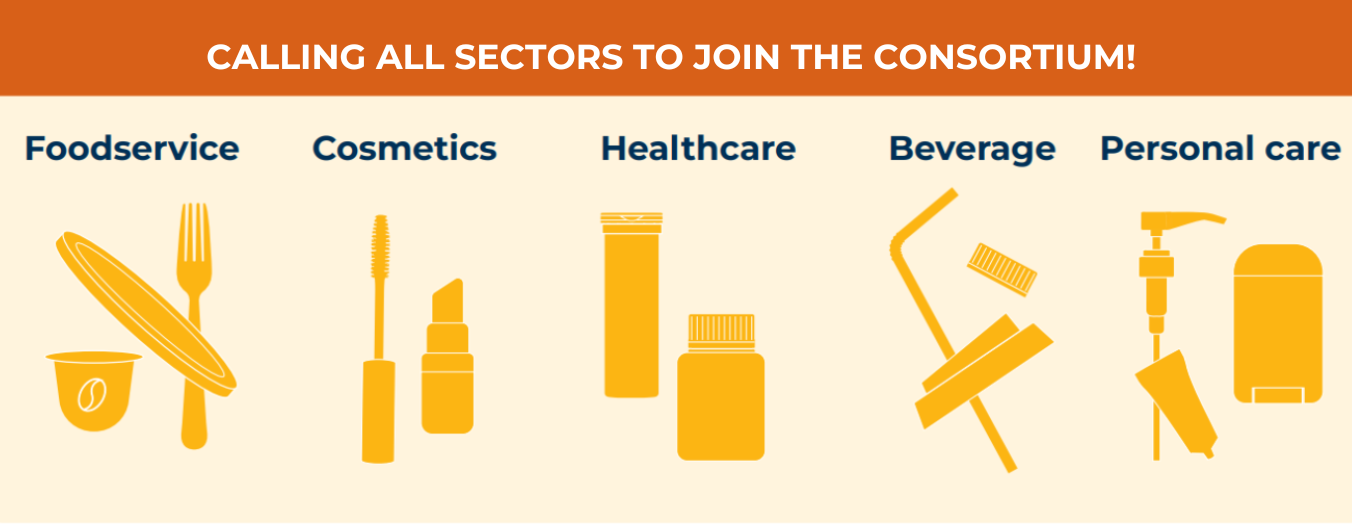Research and analysis
Small-Format Rigid Plastics Recovery
Each year, consumers buy billions of products—beauty items, medications and food—packaged in small-format plastic that is difficult to recycle due to its size and other factors. The Center for the Circular Economy is laying the groundwork to recover more of these materials, identifying recovery pathways to divert them from landfill.
Based on over 18 months of fieldwork, our report reveals a viable pathway to recover tens of thousands of tons of valuable small materials––including plastics like polypropylene––from materials recovery facilities and glass recycling plants across the U.S. These promising findings demonstrate the positive economic and environmental impact of recovering small-format packaging, catalyzing the launch of a new industry collaboration managed by Closed Loop Partners’ Center for the Circular Economy: the Consortium to Recover Small-Format Packaging.
The report builds on over two years of market research and comprehensive recycling tests in partnership with Maybelline New York and its parent company, L’Oréal Groupe, bolstered by the support of additional partners Kraft Heinz, P&G and Target.
From Research to Action
Launching the Consortium to Recover Small-Format Packaging
Based on 18+ months of fieldwork, the Center for the Circular Economy has demonstrated the value, sortability, and market demand for target small-format rigid plastics. Now, it’s time for action.
That’s why the Center for the Circular Economy is launching the Consortium for Small-Format Packaging Recovery—to deliver a field-tested proof of concept that offers states with EPR laws a clear, actionable solution and a proven pathway forward for smalls recovery.
3-year consortium launching in 2025
At least 1 proof-of-concept activated at a MRF and/or glass recycling plant
A cross-sector collaboration with partners from beauty to personal care, beverage, pharmacy & more

Here’s How the Consortium Works
Site Diligence & Infrastructure Investment
Show moreWe’re conducting rigorous, data-driven assessments of materials recovery facilities (MRFs) and glass plants in California to:
- Quantify how much small-format material is recoverable
- Test and tailor equipment upgrades to increase recovery
- Model financial feasibility and ROI for each intervention
- Engage downstream end markets to ensure there’s real demand for recovered materials
We’ll deploy grant funding to install and test equipment in the field, validate outcomes, and establish a proof of concept that others can replicate.
Designing Packaging for Recovery
Show moreEven the best equipment can’t fix poor design. That’s why we’re working hand-in-hand with brands to:
- Test product packaging in real-world recycling systems
- Use AI vision technology to track how small items behave in MRFs and glass plants
- Identify which design features aid or hinder recovery
- Recommend practical packaging changes that improve recyclability
This work helps brands align their design strategies with recovery realities—and regulatory expectations.
Policy Alignment and EPR Readiness
Show moreOur Consortium doesn’t just respond to EPR policies—it supports them. We are:
- Mapping current and emerging legislation to anticipate where action is most urgently needed
- Starting with a proof-of-concept in a high-priority geography like California
- Documenting impact—tons diverted, carbon emissions avoided, recycled content generated
- Laying the foundation for the future of curbside recyclability of small-format packaging nationwide
- Engaging, educating and informing policymakers with the necessary data and information from our proof-of-concept
Collaboration, Communication & Industry Leadership
Show moreThe Consortium isn’t a one-brand effort—it’s a pre-competitive, cross-sector collaboration designed to:
- Engage stakeholders across the value chain—from recyclers to reclaimers to policymakers
- Educate the public and drive awareness through storytelling, white papers, and media outreach
- Offer brands a platform to shape best practices, and future-proof their packaging strategies
What Our Fieldwork Told Us
5 Insights Fueling the Shift From Research to Real-World Impact Through our Consortium
1. Small materials have market value
Valuable materials, including polypropylene (PP), polyethylene terephthalate (PET), polyethylene (PE), and metals, are present in small-format waste streams that could generate value on the secondary commodities market.
2. Logistical solutions are available
Some small-formats can be integrated into regular bales of recycled materials, but this requires colocation of MRFs and glass plants to avoid additional costs. Very small items may still pose handling challenges and require alternative solutions.
3. Existing technologies are enablers
Existing technologies can be configured to target and recover small-formats at MRFs or glass plants, but implementation must be tailored to each facility’s unique characteristics, including material acceptance, volumes and layout.
4. Market demand is strong
Mechanical recyclers show strong demand for clean, sorted materials and often are willing to pay higher prices than molecular recyclers today.
5. Investment is needed
The business case for small-format recovery depends on achieving sufficient material throughput, aligning with market demand, and minimizing logistical costs. Recovery efforts likely require financial support through EPR programs or brand investments to cover capital and operational costs.
